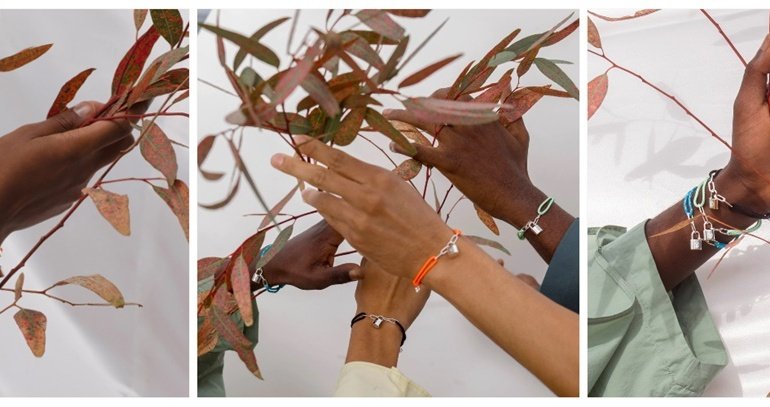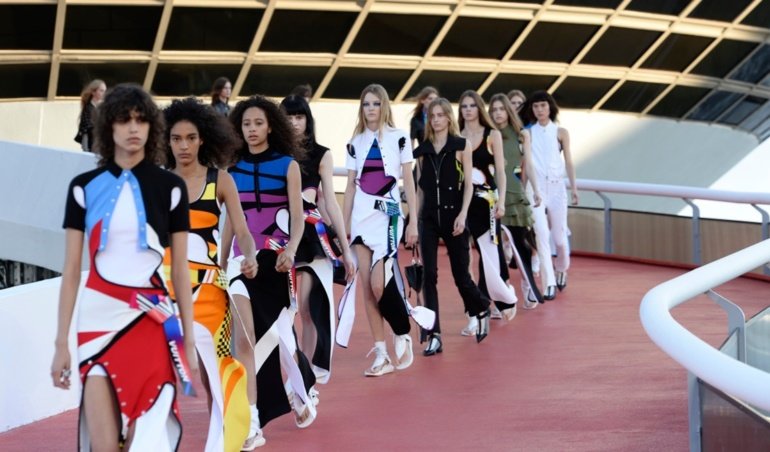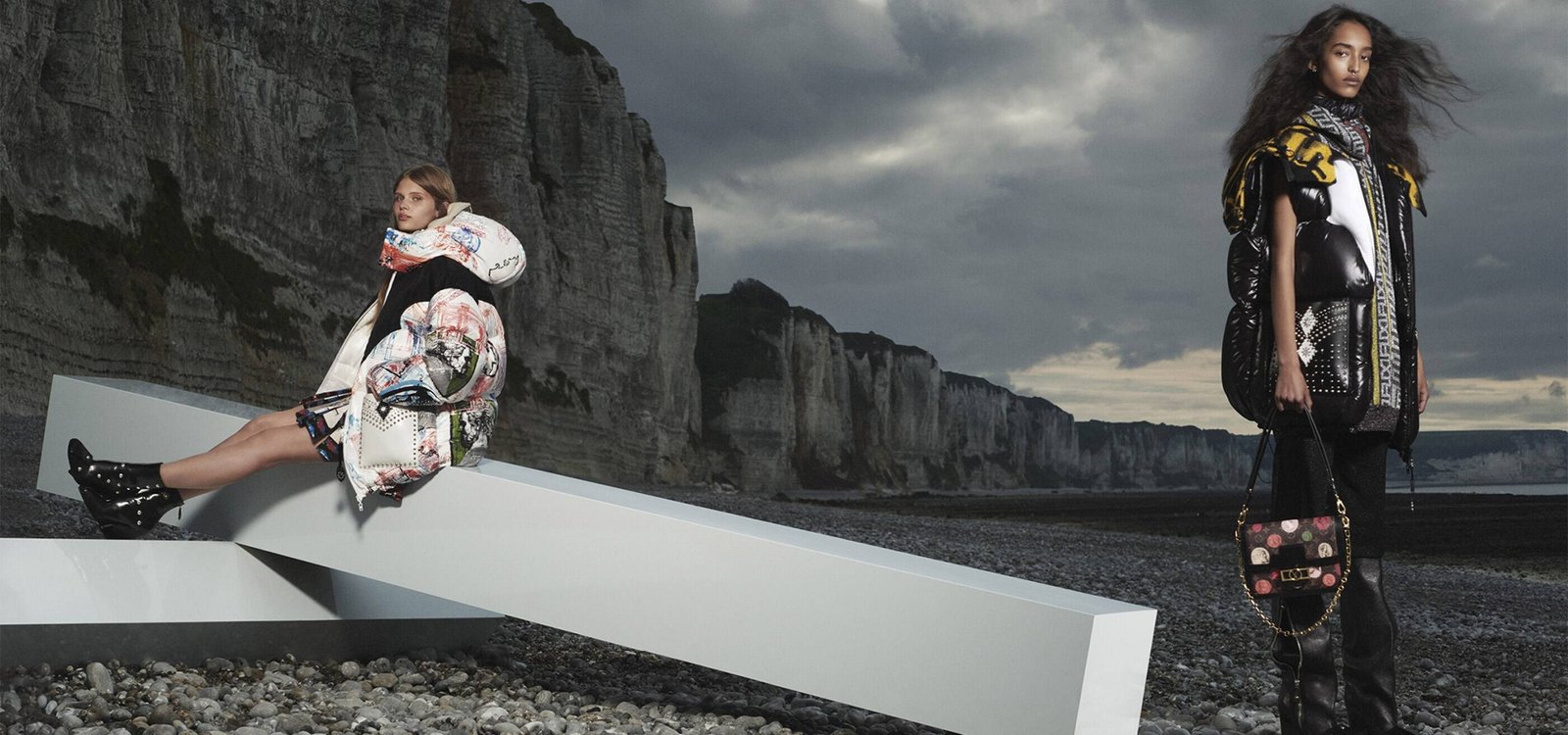Even if you have no interest in the fashion industry, it is impossible not to hear the name, Louis Vuitton. Whether you know it through the infamous brown and beige bag or just dream of owning a luxury handbag, the infamous LV is certainly a desirable brand. In fact, Forbes estimates that its value will be 39,300 million dollars in 2021.
In the world of luxury fashion, many names come and go, but Louis Vuitton seems to be stronger than ever. The brand remains elegant, admirable, and instantly recognizable. Among dozens of luxury brands, Louis Vuitton sits in a league of its own, which is impressive for a brand that began in 1854, more than a century ago.
An important factor behind Louis Vuitton’s success is the advertising strategy the company adopted. It helped promote the brand’s image as a luxury item that many can only dream of, leading to more sales and engagement in each new campaign. And you may be surprised by this, but it didn’t cost a huge budget. Let’s open Louis Vuitton’s sophisticated leather luggage and see its advertising secrets!
Table of Contents
Introduction
Created in 1854, Louis Vuitton is one of the world’s most valuable luxury brands and is a division of LVMH, a French multinational corporation specializing in luxury goods. LVMH is home to many other well-known luxury fashion brands such as Celine, Charles & Keith, Givenchy, Fendi, Marc Jacobs, Christian Dior, and Kenzo.
Louis Vuitton was the founder of the brand at just 16 years old. He came to Paris to begin his career as a trunk master. This led to the creation of LV’s most recognizable product: the square trunk. Today, Louis Vuitton offers luxury trunks, leather goods, ready-to-wear, watches, jewelry, shoes, accessories, sunglasses, and books. Most products have the LV logo monogram on the label.
Louis Vuitton sells its products through independent boutiques, high-end department stores, and e-commerce with its website. From 2006 to 2012, it was consecutively named the world’s most valuable luxury brand. As mentioned, in 2019, the brand was valued at #39.300 billion, with $15.500 billion in sales. Louis Vuitton operates in more than 60 countries with more than 500 stores worldwide.
Louis Vuitton: The Marketing Mix

As one of the world’s most recognized and innovative fashion brands, Louis Vuitton’s marketing combination represents a careful strategy for demographics and psychographic analysis of customers. The brand’s products have become over time a symbol of superiority, and people don’t seem to care about that.
Here’s Louis Vuitton’s marketing mix.
Product
Louis Vuitton is a luxury brand that manufactures and sells specialty products. The main emphasis is on the superior quality of handmade products. In order to offer the best products on the market, the company has always concentrated on sophisticated design and traditional craftsmanship, as well as simple exquisiteness.
Instead of using machines to increase production capacity, Louis Vuitton hires skilled and experienced workers to make the products by hand. This resulted in original and unique merchandise that resembles the aspirations and desires of consumers. To cope with a high-demand market, the company has invested a lot of effort and money, making the products almost impossible to replicate with the same quality.
Many of the products use the brown material Damier and Monogram Canvas, which have been used since the nineteenth century. All products display the famous initials LV, making them instantly recognizable. The company sells products through its own stores around the world, which facilitates quality and price control. This also allows Louis Vuitton to prevent counterfeit products from entering its distribution channel.
Louis Vuitton is famous for its bags and trunks. It also offers watches, jewelry, branded shoes, eyeglasses, scarves, belts, wallets, and briefcases. In recent years, the company has hired more young and talented designers to create products that appeal to the younger generation of buyers.
Price
Louis Vuitton invested generously to maintain the highest quality of its products. The durable design of the products has helped the company maintain a premium pricing policy. Louis Vuitton applies an integrity pricing policy throughout its distribution network. Therefore, no product can lower its price or have a sale time or discount. Because of the high price, only the upper classes can buy Louis Vuitton items. The company is said to have adhered to a value-based pricing strategy.
Because the price of the product is actually much higher than the market, the uniqueness, material, quality, and value of the product must be impeccable. A Louis Vuitton product is a statement of style and class, so customers are happy to pay the high prices. The perceived brand value is so high that consumers feel they get great value despite the high price. Therefore, the company’s high-value pricing strategy remains effective.
However, this leads to a problem: imitation products. Like many other luxury brands, Louis Vuitton has seen its products transformed into cheap alternatives by unknown sources, mainly in China. This leads to a flood of fake items that anyone can buy and consequently reduces the value of the brand in the eyes of consumers. This is a difficult problem for the company to solve.
Place
Louis Vuitton is very clear on its distribution policy. Their products are exclusive and sold with the same thought of providing exclusive access. To purchase a Louis Vuitton product, customers must go to official stores. These items are sold through limited exclusive distribution channels. The company has a default mindset and uses its own stores to distribute the products.
Louis Vuitton does not sell any of its branded products in department stores. The company feels that it has the best options to sell its products in its stores because its salespeople are very professional with a sharp mind to address customers in a familiar environment effectively. In the long run, this marketing strategy helps reduce the brokerage costs faced by other brands when selling across many brands. distribution channels. This also leads to direct transactions with customers, resulting in efficient and friendly relationships.
All Louis Vuitton stores are located in prime locations that immediately attract attention. The products in these stores are prominently displayed to represent a luxury brand. Louis Vuitton has opened stores in various regions of the world and has about five hundred retail stores. This includes stores in Los Angeles, Dubai, Las Vegas, New York, Paris, and Tokyo. Louis Vuitton products can only be purchased online in the United States.
Promotion
Louis Vuitton used an advertising strategy for its products with the help of celebrity sponsorship. Famous actors such as Jennifer Lopez, Kate Moss, Scarlett Johansson, and Uma Thurman have partnered with this brand as ambassadors. They have participated in high-profile campaigns for the brand. Louis Vuitton has also been actively involved in sponsoring major sporting events, such as yacht racing and motorsports.
As you can see, events like this are attended by the most elite members of society. The company can establish a direct link with the target audience through these events. Advertising is the main tool to raise awareness about the product and strengthen exclusivity, and the company has managed to create high-fashion ads that feel personal.
Although the company does not advertise on television, it adheres to a premium advertising policy in newspapers and fashion magazines. These ads are exclusively processed images that leave a distinctive mark on the brand. This demographic strategy created a wave in the advertising industry and helped make Louis Vuitton products popular around the world. Most ads revolve around celebrities and create an emotional connection with consumers. When viewing the ads, consumers believe that they are also part of the exclusive group.
Over time, Louis Vuitton has also found new channels to showcase its content and run ads. The Facebook page has 23 million followers and the Instagram account has 38.4 million followers, while the YouTube channel has 433,<>, subscribers. The company also runs ads on Facebook and Instagram.
Louis Vuitton Marketing Strategy

In this section, let’s take a look at Louis Vuitton’s advertising strategy and see how it built a successful luxury fashion brand. The company could build a lasting reputation and social status that makes any consumer yearn for an LV product through the following strategies.
Using exclusivity
Exclusivity is another factor in the advertising strategy that marked the success of Louis Vuitton. When consumers realize that a series is limited, they rush to buy it as long as it is available. This is a psychological phenomenon called FOMO, which makes people act fast for fear of missing out on a good deal.
Exclusive doesn’t equal singularity, but when you see an item from an exclusive series, you know it’s not a mass-produced item that any other ordinary person can have. This is the main reason why people spend thousands of dollars on a Louis Vuitton item that is often available only for a limited time.
Louis Vuitton often launches exclusive series on special occasions and through various sales channels. For example, in 2017, the company held a cruise that featured a limited selection of bags from a collection that is only available to buy online. Customers must buy them fast, or they will be gone forever.
This kind of exclusivity in advertising strategy makes Louis Vuitton even more desired by consumers. Not only does the strategy work for luxury brands by using FOMO, but any business can also increase the value of their products and leverage consumer psychology to make purchases.
Promotion of the highest quality craftsmanship
A special part of Louis Vuitton’s policy is to customize the design of customized products, allowing the brand to satisfy even the most discerning customers with exactly what they want, which explains why Louis Vuitton was the world’s most valuable luxury brand for six consecutive years starting in 2006. to 2012.
But it’s not just the diverse variety that made Louis Vuitton famous. Every fashionista will tell you that the highest quality handmade is what makes the brand so unique. What distinguishes them from the competition is the value of labor in an era of cheap mass production. This built a reputation for a company that is dedicated to quality. Each LV trunk can take up to 60 hours to manufacture, while a suitcase can take up to 15 hours.
So when people talk about high-quality fashion products, they mention Louis Vuitton. And that kind of word-of-mouth tends to linger in consumers’ minds for a long time. The products speak for themselves, and the company no longer has to pay any advertising costs to prove its quality.
Maintaining tradition in innovation

The history and journey of Louis Vuitton are long and interesting. Since it started manufacturing mainly trunks and trunks, you can now find the famous initials LV on clothes, perfumes, shoes, watches, accessories, jewelry, sunglasses, and even books. You will also see these products in many celebrities such as the young and talented Billie Eilish or Jaden Smith, demonstrating how millennials and Gen Z still love the brand.
For the new age of digital, Louis Vuitton tries to strike a good balance between old and new. Images are so important now that the company tends to have the best images for every single thing. social channel. LV created a cohesive hashtagging system to tie together the wide range of media and take advantage of Internet traffic. Social media provides a window for LV to connect with people, which it couldn’t do with traditional marketing methods like magazines or newspapers. But that’s the thing, LV doesn’t just sell products, it sells a lifestyle.
By maintaining traditional values and showcasing them in an innovative way, LV could gain audiences around the world. Everyone can now get acquainted with the luxury lifestyle offered by the brand. Whether they can buy an item or not, Louis Vuitton has already promoted a friendly and accessible image that it could not possibly represented in the past.
Working with top talent
One of the secrets of LV’s success is that its products are designed and promoted by top talent. Over the years, prominent names in the fashion industry such as Helmut Lang, Vivienne Westwood, Azzedine Alaïa, Stephen Sprouse, Sybilla, Manolo Blahnik, Isaac Mizrahi, and Romeo Gigli have joined LV.
But, you can have the perfect product and still get nowhere without a good promotion. This is where Louis Vuitton’s advertising strategy comes into play. How are glamorous luxury products promoted? With glamorous celebrities and models, of course.
Louis Vuitton campaigns have starred both celebrities such as Angelina Jolie, Mikhail Gorbachev, Sean Connery, Pharrell Williams, Jennifer Lopez, Uma Thurman, and Kanye West, to name a few, as well as established and new models, such as Emmy Rappe, Ming Xi or Xavier Dolan.
The best Louis Vuitton marketing campaigns
Here are some of the best campaigns Louis Vuitton ran to align with its advertising strategy:
Make a pledge of collaboration
In 2016, Louis Vuitton collaborated with UNICEF on the Make A Promise campaign, which was a bold move for the fashion company. The campaign was to support vulnerable children around the world. By creating exclusive bracelets, LV would donate the proceeds to UNICEF and help support children in need.
The commands for people to join are simple: take a photo, tag it, and spread the word. A core group of LV models quickly joined the campaign and followed a multitude of user-generated content. There were 14k posts of #makeapromise on Instagram and nearly $10 million donated.
Parade Cruise 2017
On the occasion of the 2017 Cruise Show, Louis Vuitton presents a limited selection of bags from the collection that people can buy online after the show. Iconic bags like Petite Malle, The Twist, and City Steamer are the bags to buy. It was a great combination of glamour and an online platform. It also generated a lot of traffic from people watching the show online.
Spring-Summer 2021 Parade

This is one of my favorite Louis Vuitton campaigns. The show featured a diverse cast on the runway, including names from all backgrounds who had never been on the runway before. It shows how the company values talents and artists, establishing a connection with them directly, not through a normal runway full of models. The show invited footballer Héctor Bellerín, skateboarder Lucien Clarke, skater-photographer Evan Mock, and guests such as Gigi Hadid, and Swae Lee, among others.
Conclusion
Louis Vuitton isn’t just another handbag, shirt, or apparel company. It’s a lifestyle that constantly changes with the world, which keeps the brand as one of the most desirable luxury brands in the world. With good values toward customers, the company does not need a complicated advertising strategy to stay in the minds of consumers. And, perhaps, that’s the best tactic.
Now, knowing all the advertising secrets of Louis Vuitton, what would you do with your own marketing strategy? Have you had any ideas on how to promote your brand as luxurious as LV? Share your thoughts in the comments section below, and thanks for reading!
Other Reads:
Nestle Marketing Strategy: A Case Study
Adidas Marketing Strategy The Case Study (Impossible is Nothing)
Puma Marketing Strategy: The Case Study
Pepsi Marketing Strategy: The Case Study
McDonald’s marketing strategy: A benchmark in the fast food industry




0 Comments
Orville Walton
Thanks, I have recently been looking for info about this subject for a while and yours is the greatest I have discovered so far. However, what in regards to the bottom line? Are you certain in regards to the supply?
zoritoler imol
I like the helpful info you provide in your articles. I will bookmark your blog and check again here regularly. I’m quite sure I’ll learn plenty of new stuff right here! Best of luck for the next!